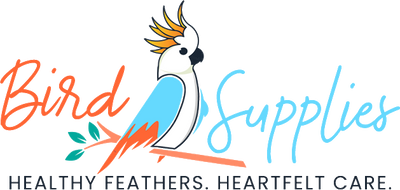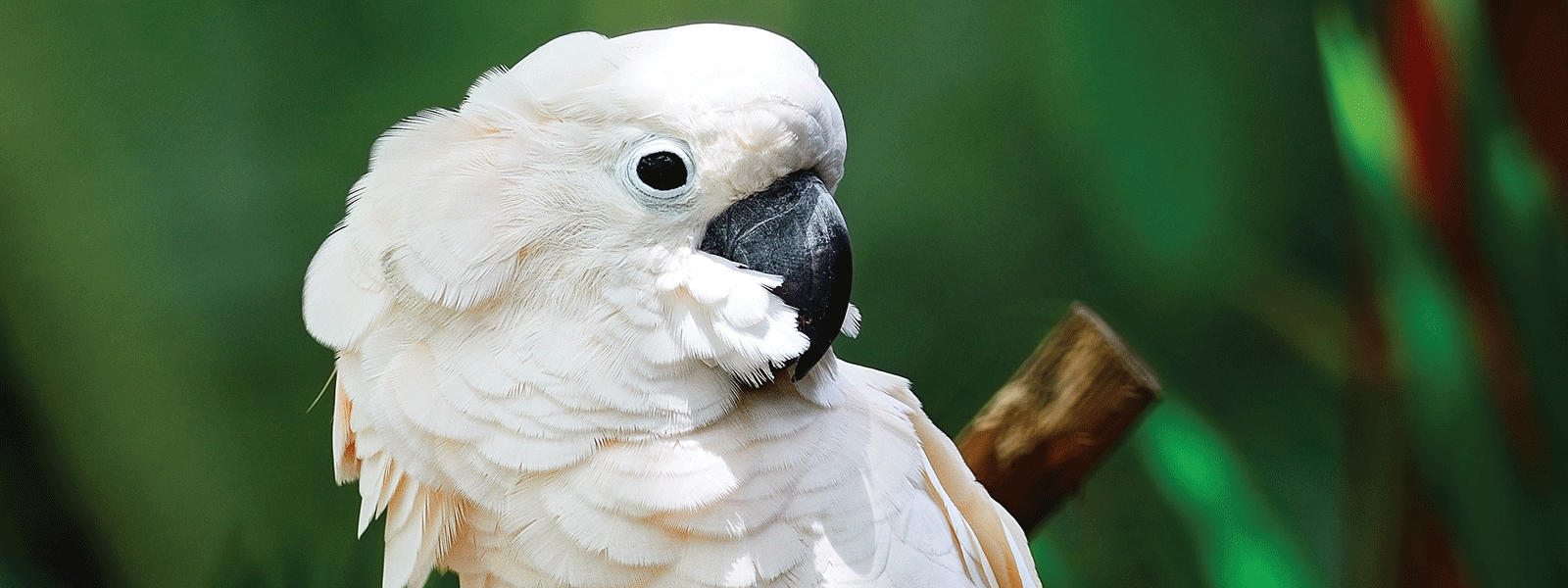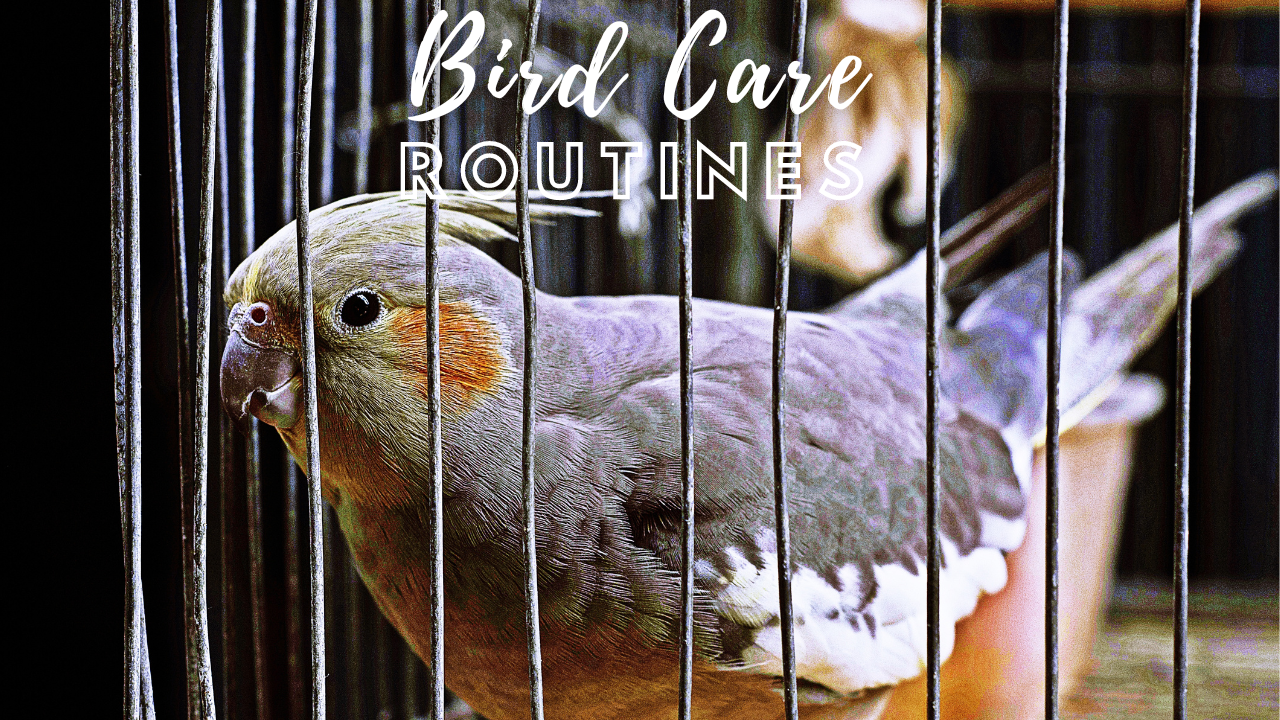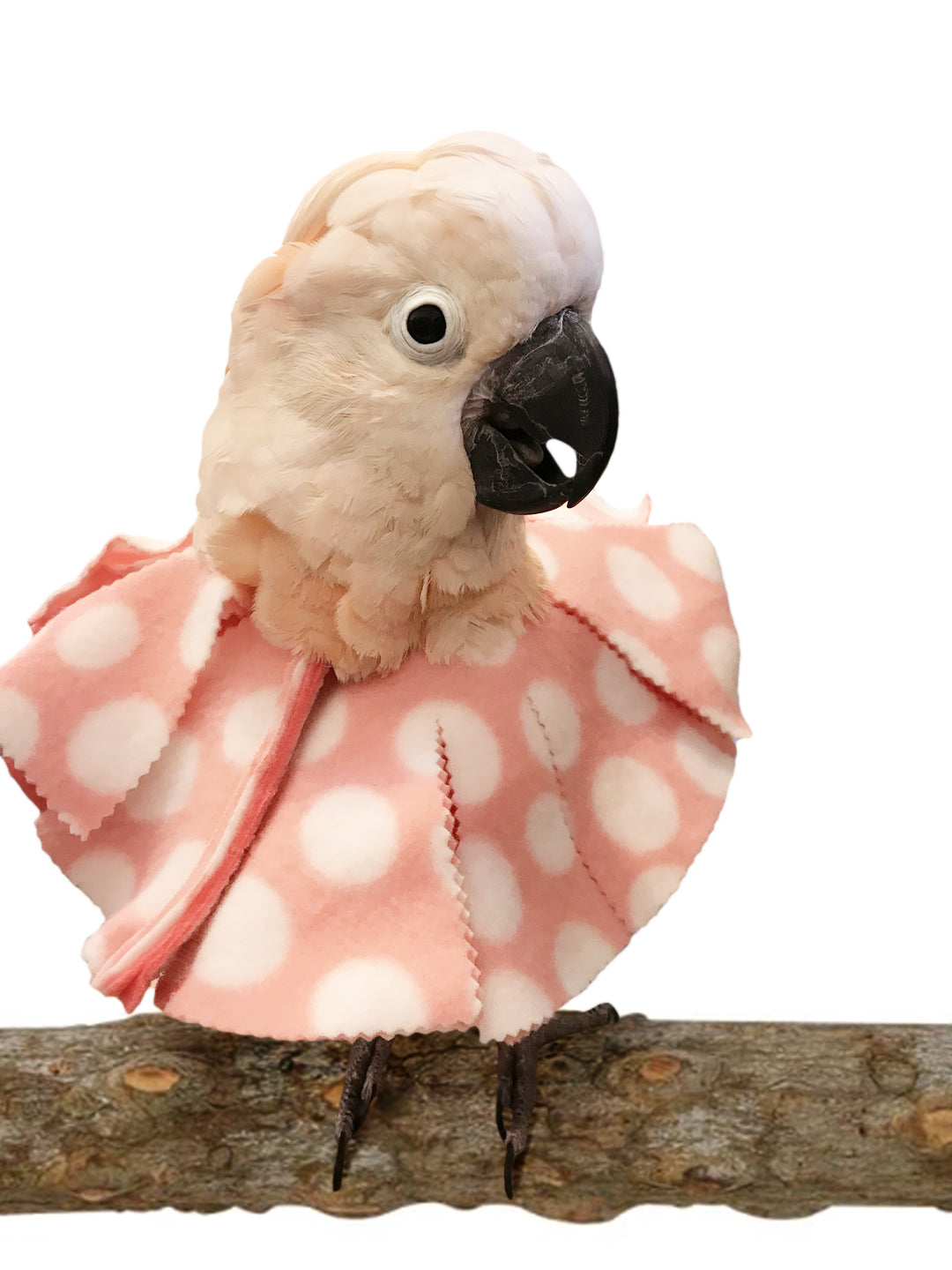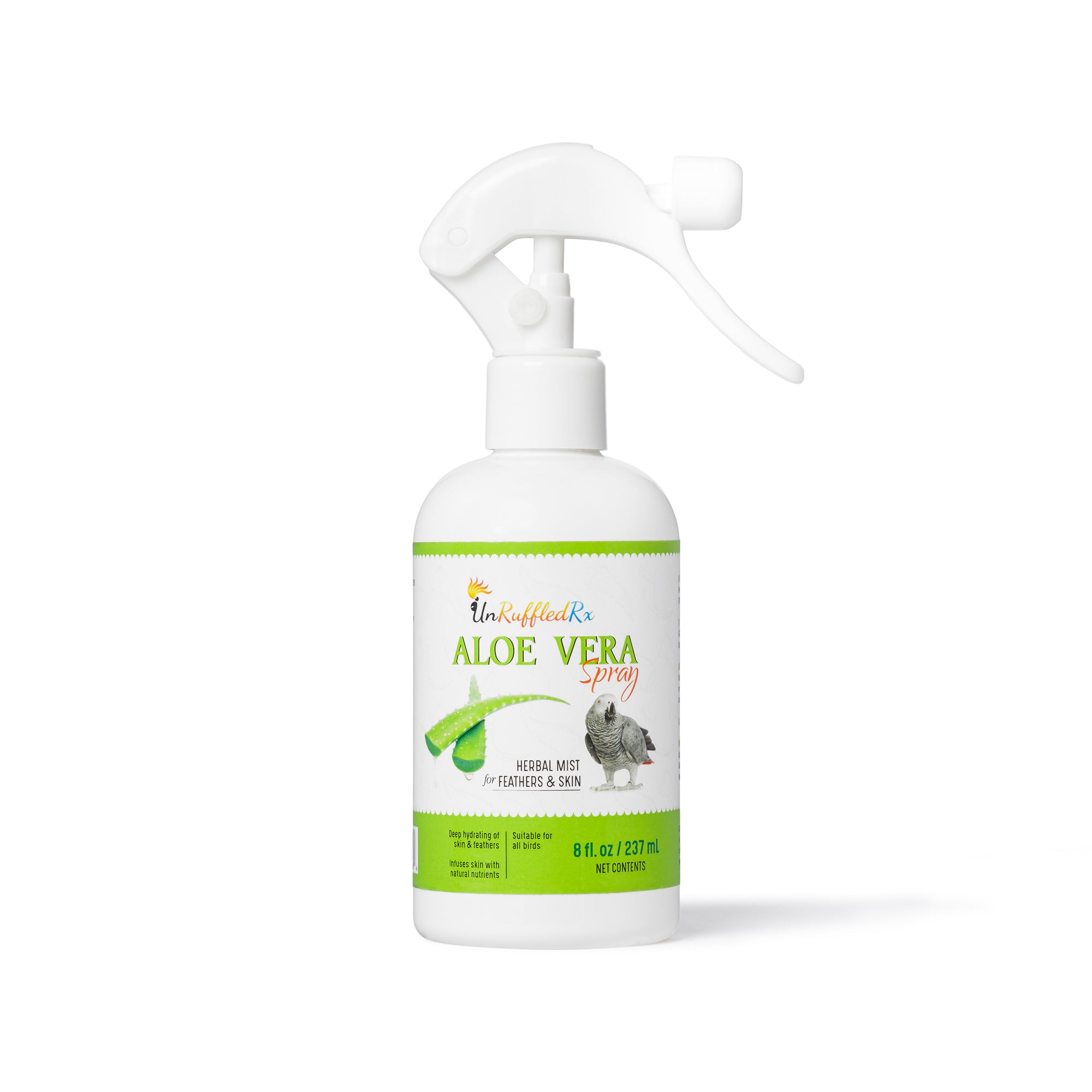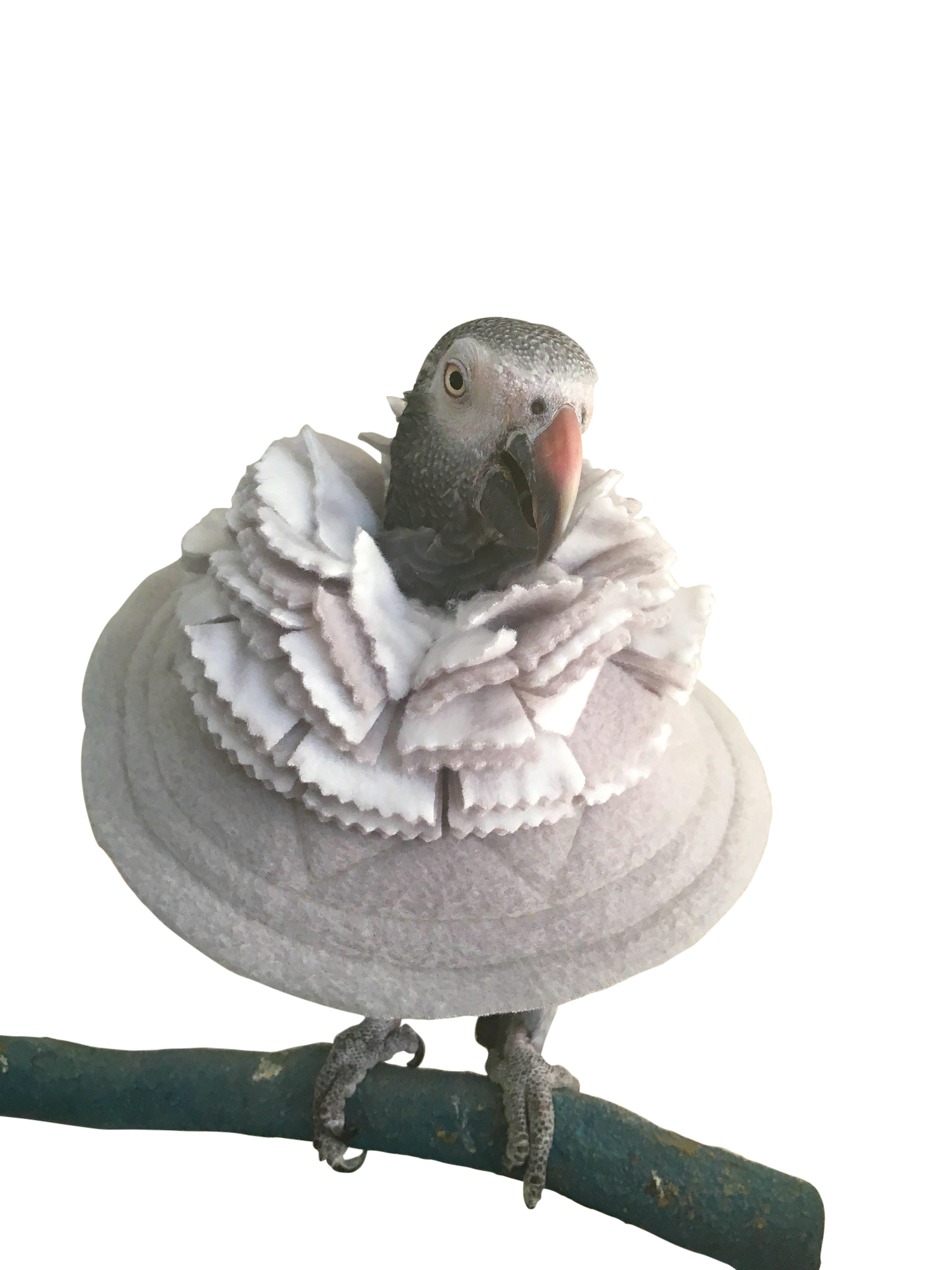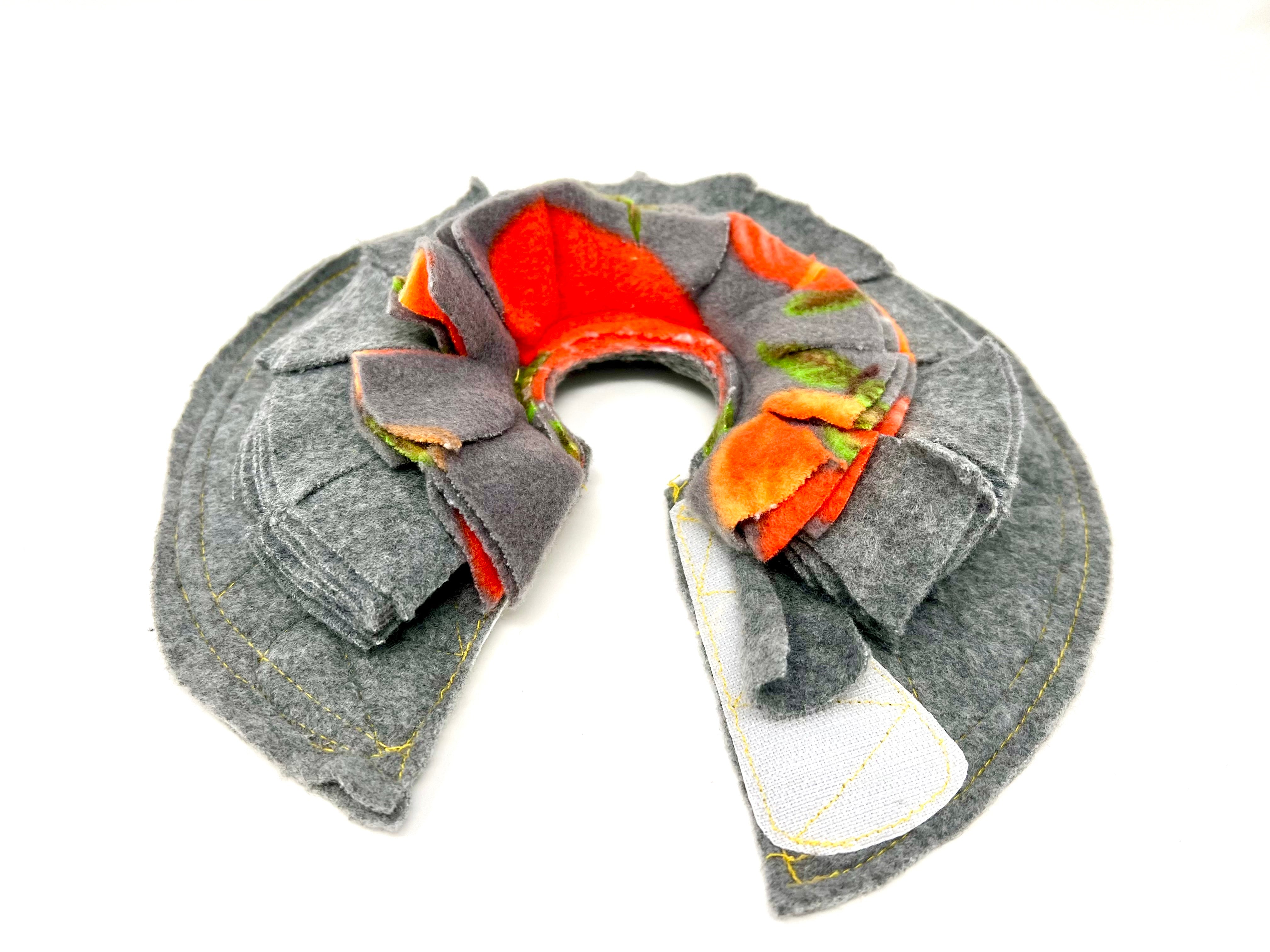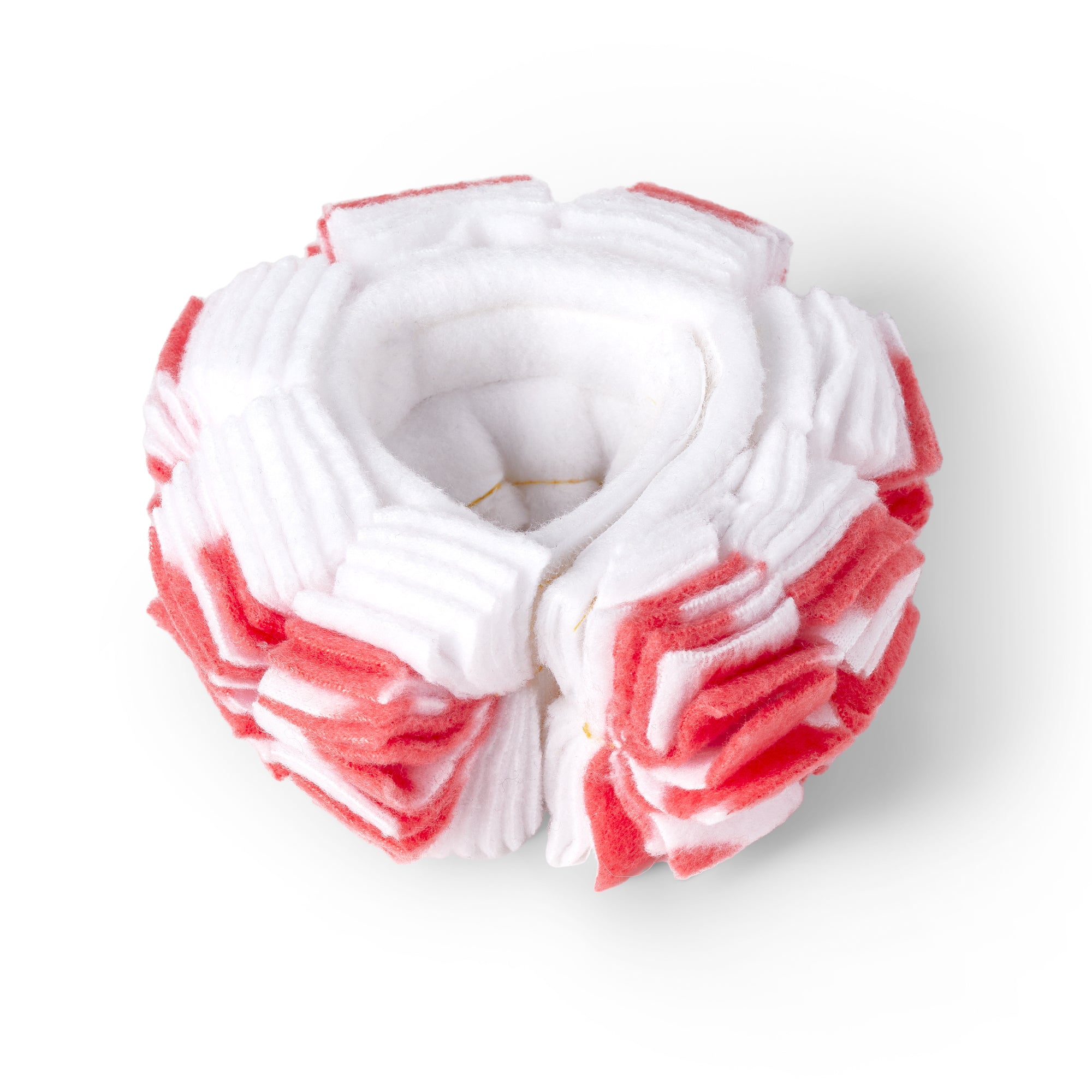Table of Contents
- Why Is My Cockatoo Plucking Her Feathers?
- How Do You Treat Feather Plucking In Parrots?
- Can Birds Recover From Feather Plucking?
- 7 Tips To Help Your Cockatoo Stop Plucking
- The Role of Medication with Severe Feather Pluckers and Self-Mutilating Cockatoos
Hey there! If you're worried about your cockatoo plucking its feathers, you're not alone. It's a big concern for bird owners like you. But don't worry—I'm here to help! In this guide, I'm going to break down why your feathery friend might be doing this and share some simple tricks to make them feel better. We'll talk about what's causing it and, most importantly, how you can make sure your birdie buddy stays happy and healthy. Let's dive in and figure out how to keep those feathers where they belong!
Why Is My Cockatoo Plucking Her Feathers?
If you're scratching your head and asking, "Why is my cockatoo plucking her feathers?"—you've come to the right place. Feather plucking in cockatoos can be puzzling, but fear not, I'm here to unravel the mystery and guide you through it.
First things first, feather plucking is like a bird's way of telling us something isn't quite right. Your feathery friend might be feeling stressed, bored, or even a bit under the weather. Cockatoos that have come from a poor breeder situation or that have been rehomed are prone to nervous, anxious behaviors. Imagine if you were feeling a bit down or anxious—you might bite your nails or twirl your hair. Well, birds express themselves by plucking their feathers.
So, let's play detective! Check out your cockatoo's surroundings. Is there something new or different that might be bothering them? Maybe a change in their environment or a new addition to the family? Birds are sensitive creatures, and even small changes can stress them out.

Now, here's the scoop on health. Cockatoos, like all parrots, hide their illness at any expense. It's a survival mechanism for them. If your cockatoo isn't feeling tip-top, they might pluck to show they're not in the best shape. It's like their way of saying, "Hey, I need some attention here!" Keep an eye out for any signs of illness, like changes in poop, eating habits, or energy levels.
But fret not—there's good news! As your resident bird feather plucking expert, I'm here to share some tips and tricks to help your cockatoo kick this feather-plucking habit. We'll explore ways to create a cozy, stress-free environment and keep your birdie buddy happy. So, let's embark on this feather-filled journey together, ensuring your cockatoo's feathers stay right where they belong!
How Do You Treat Feather Plucking In Parrots?
Feather plucking in cockatoos is more common than you might think, with a whopping 42.4% of cockatoos showing this behavior at some point in their lives, Stephanie Jayson, VetMB, 2014.
First off, feather plucking is like a puzzle, and to solve it, we need to understand what's going on and how entrenched the habit has become. When I'm doing a plucking consultation, I have my clients fill out a 7 page document to try to get to the root causes.
If you've found yourself on the internet, seeking answers for your feather plucking cockatoo, you're in good company. It's a common to join groups and forums to get answers on "How do you treat feather plucking in parrots?"
When you make that worried trip to the vet, the first order of business is ruling out any medical causes. Picture it as a detective story – your vet uses their medical know-how to run labs and investigate potential health issues. It's like turning on the spotlight to uncover any underlying health concerns that might be triggering your parrot's feather-plucking behavior.
Now, the vet might present you with a couple of options. One is the infamous bird collar. It's like a bandaid for feather plucking – it interferes with your bird's ability to access their feathers. But, bird collars don't dive deep into the root of the problem. It's a bit like putting a temporary bandage on a puzzle piece. Plus, some birds don't tolerate collars well, causing stress and discomfort, especially for our older or unwell feathered companions.
Now, onto medications. Some vets might suggest anti-anxiety or antidepressants, but here's the scoop – birds aren't like your everyday mammals. They're delicate creatures, and medications can affect them differently. Vets may be a bit cautious because our feathered friends don't tolerate medications the same way a dog or cat might. It's like walking on a tightrope – delicate balance is key.
While ruling out medical issues, disrupting an emerging compulsive habit, and considering anti-anxiety or antidepressant options are solid starting points, we're just scratching the surface. It's like solving the first layer of a puzzle.
But to truly crack the code on feather plucking in parrots, we need to dig deeper. Think of it as embarking on a journey to uncover the root cause, allowing us to address the issue at its core. So, let's continue our exploration, combining expert insights with practical "parrot wellness" strategies to ensure a feather-friendly and fulfilling life for your cherished parrot companion.
Now, let's delve into the fascinating world of feather plucking from a neuroscience perspective.
Can Birds Recover From Feather Plucking?
Unraveling the Complexity of Cockatoo Feather Plucking: A Holistic Perspective
Embarking on the journey to understand and address cockatoo feather plucking requires delving into various contributing factors. These include the severity and duration of plucking, trauma history, wellness factors, and the impact of irresponsible breeding practices. Let's explore each dimension to comprehend their role in this intricate issue.
Severity of Plucking: The severity of plucking directly correlates with whether the habit has transformed into a compulsive behavior. A mild case may involve occasional feather removal, while a severe instance can result in extensive plucking that becomes difficult to break. Understanding the severity aids in tailoring interventions to the specific needs of the bird.
Duration of Plucking: The length of time a bird has been engaging in plucking behavior also plays a crucial role. Early intervention in cases under a year may yield better outcomes compared to persistent plucking over several years. Long-term plucking can become ingrained, making it more challenging to reverse the behavior.
Trauma History: Birds with a history of trauma, whether due to poor breeding practices, rehoming stress, or inadequate care, are more prone to feather plucking. Trauma can create lasting behavioral challenges, necessitating targeted interventions that address the underlying emotional distress.
Wellness Factors: Factors such as diet, sleep, enrichment, and pain management contribute to overall bird wellness. When these elements are neglected, it can lead to stress and anxiety, triggering feather plucking as a coping mechanism. Prioritizing parrot wellness is crucial in preventing and managing plucking behaviors.
Irresponsible Breeding Practices: Babies improperly weaned by irresponsible breeders may lack essential social and behavioral skills. This deficiency can contribute to heightened stress levels, making these birds more susceptible to feather plucking as a maladaptive response to their environment.
Understanding these contributing factors is paramount for effective intervention. Addressing the root cause of the plucking allows for targeted and comprehensive interventions tailored to the specific needs of the bird. It's akin to solving a puzzle – knowing each piece helps create a clearer picture, guiding us toward the most effective strategies for promoting a healthier and happier life for our feathered friends.
Feather Plucking Recovery
At BirdSupplies.com, when we're assessing the prognosis for a feather plucking cockatoo, we look at the severity of the plucking, which includes the extent of feather damage and the length of time that the bird has been plucking. As a general rule, the larger the bald spot and the longer the plucking has been going on, the lower the prognosis. Mild to moderate birds that have been plucking for less than 18 months to 2 years have the best prognosis. These bird's haven't developed a compulsive habit yet and it is less likely that they've damaged their feather follicles.
There are two other factors to consider, as well. These include how well the owner looks out for parrot wellness and whether the bird has a history of trauma. More specifically, how many gaps are there in parrot wellness and how many traumatic incidents the bird has experienced. Of course, each bird is unique.
Overall, the prognosis for feather plucking is better than the prognosis for self-mutilation.
Trauma-Related Issues
The trauma experienced by a bird, stemming from poor breeding conditions, inadequate diet, rehoming stress, or a lack of social skills, significantly influences the recovery process. Birds with a history of multiple traumas face a more uphill battle, with a lower prognosis for successful recovery.
Parrot Self Mutilation Recovery
Transitioning from feather plucking to self-mutilation involves intricate neurological processes. The rewiring of the bird's brain and alterations in brain chemistry occur rapidly during mutilation episodes, contributing to a poorer prognosis. The more intense the self-mutilation, the quicker the bird's neurological landscape is altered, emphasizing the need for swift and effective interventions.
7 Tips To Help Your Cockatoo Stop Plucking
Rule Out Medical Issues
Ensuring your feathered friend is in tip-top shape is the first step on the road to resolving feather plucking. Imagine it like a detective mission where we're uncovering clues about your bird's well-being. A visit to an avian or exotics vet is like a checkup for your bird's overall health. These specialized vets know the ins and outs of our feathered pals, and they're experts in understanding their unique needs.
During the physical examination, the vet will carefully inspect your bird, checking feathers, skin, beak, and all those intricate nooks and crannies. They may even use some nifty tools like a special light to get a closer look. But that's not all – common lab tests might also be on the agenda. It's like sending your bird's blood or feathers to the science lab for analysis. These tests can reveal important details about your bird's health, helping the vet rule out any sneaky medical issues that could be triggering the feather-plucking shenanigans.
Now, if your feathered buddy gets a clean bill of health, that's fantastic news! It means there's no hidden health culprit causing the feather plucking. But, if there's a little health hiccup, don't worry – the vet will guide you on the next steps. It's all part of the journey to make sure your birdie is happy, healthy, and ready to flaunt those feathers without any worries!
Interrupt Plucking With A Cockatoo Plucking Vest
Embarking on a journey to help your feathered friend through feather plucking requires a comprehensive approach, and a Cockatoo Plucking Vest emerges as a key player in this avian adventure. Check out our Beakguard Cockatoo Plucking Vest For Self Mutilators. It features a tailored beak proof material used in bullet proof vests and is designed to gently interrupt the habit. Even though a sharp cockatoo beak can eventually bust through the bullet-proof fabric, this bird vest temporarily interrupts pluck so that you can address other issues that are causing your cockatoo to harm itself.
Here's a fantastic resource to guide you on this feather-friendly mission – a free book that not only teaches you how to help your bird accept the Cockatoo Plucking Vest but also delves into long-term approaches for managing plucking. It's like having an expert by your side, sharing insights and strategies to navigate this aspect of avian care.
Don't stop at the bird vest!
Long-term success involves incorporating science-backed methods, such as enhancing parrot wellness and using positive reinforcement to teach replacement "coping" behaviors other than plucking.
These approaches go beyond just interrupting the plucking habit; they aim to rewire the bird's brain, encouraging proactive behaviors and steering them towards normal parrot behaviors. Keep reading to learn more about these approaches.
Focus on Parrot Wellness
Parrot wellness, according to the insights of the UC Davis Richard M. Shubot and the Association of Avian Veterinarians, encompasses the physical, mental, and social well-being of these vibrant birds. It goes beyond the absence of illness and delves into the holistic aspects of a parrot's life, emphasizing preventive measures and a comprehensive approach to care.
Common misjudgments related to parrot wellness include:
1) The Importance of a Balanced Diet
A crucial component of parrot wellness is a well-rounded diet. Ensure your cockatoo thrives by offering a diverse array of fresh fruits, vegetables, high-quality pellets, and occasional treats. Consult with avian veterinarians to tailor a nutrition plan that meets the specific needs of your feathered friend, promoting vibrant plumage and overall health.
2) The Role of Adequate Sleep
Just like us, parrots require ample rest for optimal health. Ensure your cockatoo enjoys 10-12 hours of uninterrupted sleep each night. Provide a quiet, dark space to mimic their natural sleep environment, promoting mental well-being and reducing stress.
3) The Joy of Regular Bathing
Bathing isn't just a hygiene routine; it's a cornerstone of parrot wellness. Encourage your cockatoo to embrace their inner water lover with regular baths. Whether it's a misting spray or a shallow basin, this simple practice helps maintain feather health and provides mental stimulation.
4) Enrichment for a Stimulated Mind
Parrots are highly intelligent and thrive on mental stimulation. Keep your cockatoo engaged with a variety of toys, puzzles, and activities. Rotate toys regularly to prevent boredom, fostering a happy and contented parrot.
5) The Importance of Regular Exercise
Physical activity is key to parrot wellness. Ensure your cockatoo has ample space for flying and climbing. Encourage play with toys that promote movement and exercise. Regular physical activity not only supports cardiovascular health but also aids in preventing obesity.
6) Minimizing Unnatural Sexual Bonds
While it's natural for parrots to form strong bonds, it's essential to minimize unnatural sexual behaviors. Avoid encouraging excessive preening or mating-related behaviors, as these can lead to stress and feather plucking. Foster a balanced and respectful relationship with your feathered companion.
7) Pain Management
Parrots are masters at masking pain. Regular veterinary check-ups are crucial for detecting potential issues early. Watch for subtle changes in behavior, eating habits, or vocalizations. Addressing pain promptly is a vital aspect of parrot wellness, preventing further complications and supporting a high quality of life
In conclusion, providing for proper parrot wellness is akin to offering a magic pill for preventing feather plucking. By incorporating these elements into your cockatoo's daily life, you're not only ensuring their physical health but also nurturing their emotional well-being, creating a foundation for a thriving and joyful feathered friend.
Use Positive Reinforcement To Teach Natural Parrot Behaviors
Decoding Behavior: Unveiling the Function of Feather Plucking
Every behavior serves a purpose, and understanding why your cockatoo plucks is paramount. Positive reinforcement highlights the importance of recognizing the function behind behaviors. Is your bird stressed, seeking attention, or engaging in a self-soothing ritual? Identifying the function guides your positive reinforcement strategy.
Consequences Matter: Shaping Future Behaviors
Consider what happens immediately after your cockatoo plucks – is it reinforced with attention, treats, or a soothing response? By identifying and altering these reinforcers, you can influence your bird's behavior positively, redirecting their focus away from plucking.
"A reinforcer is anything that immediately follows a behavior...Reinforcers increase the probability that the behavior they follow will be repeated in the future"(Friedman S. & Greene Linden, P., 2003).
Environmental Influence: Changing the Setting for Behavioral Change
To modify behavior, change the environment. Dr. Friedman's wisdom underscores the role of the surroundings in parrot behavior. Evaluate your bird's living space, its social interactions, and mental stimulation? Remember Timmy's case study? When I changed the environment so that he wasn't fearful of getting attacked by Smokey, he stopped plucking his tail feathers out.
There is an inherent connection between an animal's behavior and the environment in which it behaves. Susan Friedman Ph.D. |
Minimize The Plucking Triggers
Feather plucking in cockatoos can be a challenging behavior, often triggered by environmental factors. The key to addressing this issue lies in understanding and eliminating the circumstances that lead to a plucking episode. Environmental manipulation, or making changes to the bird's surroundings, is a powerful and effective method for modifying unwanted behavior.
Identifying Triggers Through Time-Study: To pinpoint triggers, a helpful technique is conducting a "time-study." This involves scheduled observations, counting plucked feathers, and reflecting on potential causes of anxiety. By systematically studying the bird's behavior, you can gain insights into when plucking occurs and what might be causing it.
Applying A Time-Study to Timmy's Feather Plucking Case: Take Timmy, my senior Timneh African Grey, for instance. Around the age of 20, he began plucking his tail feathers. Sharing a bird room with a Congo African Grey and a Moluccan Cockatoo, Timmy faced a challenging social environment. The Grey's, despite having separate cages due to their feisty interactions, would aggressively seek each other out, leaving Timmy at a disadvantage due to his gentler nature and smaller size.
Make Simple Changes: Through a time study, it became apparent that Timmy's anxiety heightened around Smokey, the Congo African Grey, especially after a particularly intense altercation. The solution? Move Timmy out of the bird room. This straightforward adjustment removed the trigger, alleviating Timmy's stress and, consequently, reducing his feather plucking.
Environmental manipulation, guided by careful observation and adjustments, can significantly impact a cockatoo's feather plucking behavior. In Timmy's case, this approach proved to be a simple yet effective solution, underscoring the importance of understanding and modifying the bird's surroundings to promote a healthier and more comfortable living environment.
The Role Of Medication With Severe Pluckers and Self-mutilating Cockatoos

I'm not a veterinarian and, as such, cannot endorse, authorize, or prescribe veterinary drugs or protocols. The details provided here are solely for educational purposes. It's crucial to acknowledge that any medical remedy comes with inherent risks.
Many avian vets prescribe medications for feather plucking. When it comes to addressing anxiety in our feathered friends, it's crucial to use only medications approved for use in birds. According to the Merck Veterinary Manual, certain medications have shown promise. These include Amitriptyline, Clomipramine, Haloperidol, and Fluoxetine. These medications can help in managing anxiety-related behaviors by calming the bird's nervous system.
Always consult with your avian vet to determine the suitability of medication for your specific bird.
When dealing with birds that engage in self-mutilation, a more intensive medication called haloperidol (Haldol) might be considered. The Merck Veterinary Manual recognizes its potential in managing severe feather destructive behavior. However, it's important to emphasize that medication should always be part of a comprehensive plan that includes behavioral modification, environmental adjustments, and regular veterinary oversight.
We (Chloe Sanctuary) have had 100% success with feather destructive behavior and mutilation using antipsychotic drugs. Dr. Jenkins of the Avian and Exotic Animal Hospital in San Diego has been helping rescues and sanctuaries as well as the public with the use of Haldol. Let me say frankly that anecdotal remedies do not work. Few birds survive the progress of this disease without drug intervention. ChloeSanctuary.com |
Parrots and cockatoos experience an extended dependency phase, much like human children. Their behaviors are shaped by interactions within their bird families during this period. However, when raised by humans, these natural social dynamics can be disturbed, presenting unique challenges in their development that might be compared to autism or psychosis. This is where intensive medications like Haldol come into play. Unfortunately, most cockatoos experiencing self-mutilation due to early parental deprivation face a difficult road to recovery.
For many of these birds, lifelong medication becomes a necessity to navigate the impacts of this complex condition. Without this ongoing intervention, the grim reality is that most will face the risk of succumbing to life-threatening complications stemming from self-mutilation.
How To Help Your Bird
1. Watch Chloe Sanctuary video
2. Print Out This Page from the Merck Veterinary Manual
3. Access This Chapter, Print it out, and share it with your vet: https://onlinelibrary.wiley.com/doi/epdf/10.1002/9780470344651.ch24
In Conclusion...
In unraveling the intricate web of cockatoo feather plucking, we've explored the effectiveness of environmental manipulation as a transformative strategy. Understanding and eliminating triggers through systematic observation and adjustments can make a profound impact on these feathered companions. Timmy's story, a senior Timneh African Grey, exemplifies how a simple environmental change led to significant improvements in his well-being.
As you reflect on the insights shared, consider the unique needs of your feathered friends and the adjustments that might enhance their lives. Are there environmental triggers that could be minimized or eliminated? Are there subtle changes in their surroundings that could lead to more content and pluck-free days?
Share your thoughts, experiences, and major takeaways in the comments below. What changes will you be making in your bird's environment to address feather plucking? Let's create a space for shared learning and support, fostering a community dedicated to the well-being of our cherished avian companions. Together, we can make a positive impact on the lives of our feathered friends
Related Posts:
Cockatoo Diet
Managing Cockatoo Dust and Dander
How Can I Make My Bird More Active?
References:
Chloe Sanctuary. (n.d.). Haldol: Our Perspective. Retrieved November 16, 2023, from https://www.chloesanctuary.org/haldol-our-perspective.html
Fox, R. (2006). Handrearing Behavioral Impacts and Implications for Captive Parrot Welfare. In A. Leuscher (Ed.), The Manual of Parrot Behavior (pp. 83-92). Blackwell Publishing. Ames, Iowa.
Friedman, S. G. (2010, February 23). Trainers, Jackhammers Need Not Apply. Psychology Today. https://www.psychologytoday.com/us/blog/behavior-works/201002/trainers-jackhammers-need-not-apply
Friedman, S. G., & Greene Linden, P. (2023, May). How Parrots Learn to Behave. Bird Talk Magazine.
Jayson, S. L., Williams, D. L., & Wood, J. L. N. (2014). Prevalence and Risk Factors of Feather Plucking in African Grey Parrots (Psittacus erithacus erithacus and Psittacus erithacus timneh) and Cockatoos (Cacatua spp.). Journal of Exotic Pet Medicine, 23(3), 250-257.
Martin, K. (2006). Psittacine Behavioral Pharmacotherapy. In A. Leuscher (Ed.), The Manual of Parrot Behavior. (pp. 267-266). Blackwell Publishing. Ames, Iowa.
Merck Veterinary Manual. (n.d.). Psychotropic Medications Used for Feather Plucking in Pet Birds. Retrieved November 16, 2023, from https://www.merckvetmanual.com/multimedia/table/psychotropic-medications-used-for-feather-plucking-in-pet-birds
Seibert, L. (2006). Feather-picking Disorder in Pet Birds. In A. Leuscher (Ed.), The Manual of Parrot Behavior (pp. 255-280). Blackwell Publishing. Ames, Iowa.
Link to this blog: https://birdsupplies.com/blogs/news/feather-plucking-in-cockatoos-tips-for-a-happier-bird
Please cite BirdSupplies.com, Inc. as the source and Diane Burroughs as the author.
Diane Burroughs, LCSW is a licensed psychotherapist trained in ABA therapy techniques. She specializes in avian anxiety disorders and is certified in Nutrition For Mental Health. Diane has written a number of bird behavior books and she offers behavior consultations. She's developed a range of UnRuffledRx Science-backed Parrot Wellness Supplies.
Diane's products have been featured in the Journal of Avian Medicine and Surgery and at Exoticscon, a conference for exotic pet veterinarians. Her bird collars & supplements are stocked in avian vet clinics and bird stores throughout the US. With over 30 years in the field of behavior, Diane has created thousands of successful individualized behavior plans that help pets thrive.
TAGS: #FeatherPlucking #FeatherPluckingCockatoo #CockatooFeatherPlucking #CockatooPluckingVest #ParrotSelfMutilation
SHARING IS CARING! PLEASE SHARE ON YOUR FAVORITE SOCIAL MEDIA NOW!
